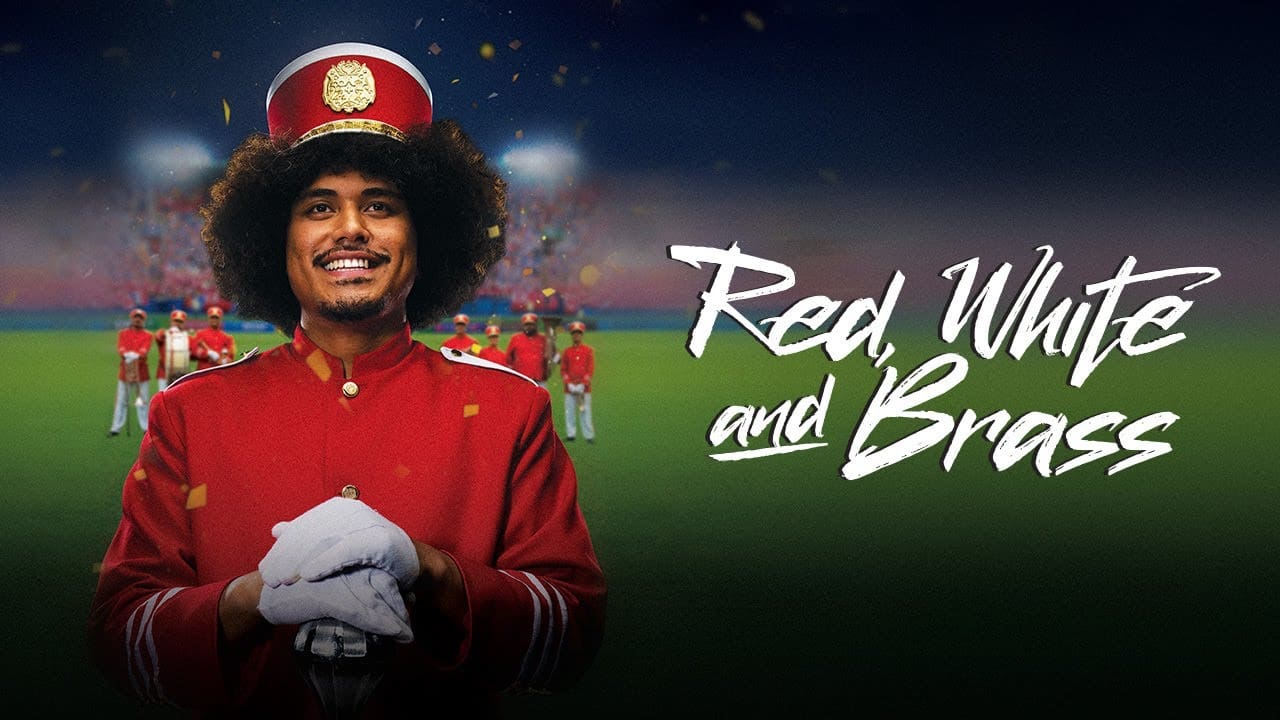ʻOku ou ʻiloʻi hoku tukufakaholo Wiradjuri, Dharug, Dhungutti, Gooreng Gooreng mo e faka-Tonga. ʻOku ou laukau ʻaki hoku ngaahi anga fakafonua
I acknowledge my Wiradjuri, Dharug, Dhungutti, Gooreng Gooreng and Tongan heritage. I am proud of my culture.
ʻOku ou fakaʻapaʻapaʻi hoku aunties mo e faʻetangata ʻi ʻAositelelia mo e puleʻanga ʻo Tonga. ʻOku ou ʻiloʻi ʻenau fehokotaki fakalaumālie, fakafonua mo fakatuʻasino mo honau fonuá mo e anga fakafonuá.
I pay respect to my aunties and uncles both in Australia and the Kingdom of Tonga. I acknowledge their spiritual, cultural and physical connection to their land and culture.
Mate maʻa Tonga
Die for Tonga
Red, White & Brass is a beautifully crafted story with plenty of heart, pride, and laughs. Inspired by a “straight up” true story during the 2011 Rugby World Cup, the film wonderfully captures this fulfilling joy and camaraderie, and focuses on one of the most passionate rugby nations of all: Tonga.
Red, White & Brass is directed by Damon Fepulea’i, who co-wrote the screenplay with Halaifouna Finau (Nua). The film is based on true events and centres around Maka (John-Paul “JP” Foliaki) a Tongan superfan who will do whatever it takes to get tickets to the Tonga v France Rugby World Cup game — even if that means promising to deliver a brass band for the pre-match entertainment. The only problem is that, this band doesn’t exist, and Maka has four weeks to pull one together. Hilarious cultural and family banter ensues as Maka scrambles to assemble his brass band in four weeks, roping in his cousins and family friends to learn how to play brass instruments and march in unison.
The film provides an unique insight into Tongan Culture, and widely speaks on the cultural concept of “māfana”, seen through the main characters and the Tongan community. In the Tongan language, “māfana” describes two things — the first is an overwhelming feeling of warmth, and the second is an outburst of great emotion and ecstasy characterised by uncontrollable dancing and loud screaming. Screenplay co-writer Halaifouna Finau explains the concept as “a word that describes Tongan energy. It describes what being Tongan is, it describes the feeling of when you are in a Tongan environment – just warm, it’s home, it’s us.”
It is never difficult to tell when Tonga has a rugby match on, you can see the pride and cheers of Tongans across the world — Tongans going the extra mile in showcasing the national flag, impromptu parades of vehicles decked out in Tongan Flags, horns honking and blasting Tongan songs out of the speakers. Tongans were painting their houses and covering them from top to bottom with hundreds of flags. They were turning up to games, decked out from head to toe in Tongan colours, waving their flags and creating a sea of red and white pride. In Red, White & Brass, we see the group of young Tongans in Wellington, who create a Marching Band; Talanga U Brass Band, in order to get free tickets for the France vs. Tonga at the 2011 Rugby World Cup. Although having weeks to prepare, it was their Māfana that encouraged them to to learn brass instruments from scratch.
Red, White & Brass also features a talented ensemble that formed the fantastic brass band. There is something about seeing your people on screen being portrayed perfectly that makes this movie so heartwarming. JP Foliaki portrays the mastermind of the Brass Band and goes through the journey of discovering the importance of Tongan Culture. The film itself is a great example on how Tongans can be perceived through the media. We’ve seen inaccurate, racist portrayals of Tongan people in the media, such as Chris Lilley’s highly offensive Jonah from Tonga – a white man depicting a Tongan schoolboy of low socioeconomic status and challenging circumstances. This racist portrayal of Tonga was the only representation we’ve had in film and media until Red, White & Brass came out.
The Tongan Community should be filled with such pride over Red, White & Brass, we are seeing aspects of culture, customs, and Tongan language being woven into the script, which was a massive highlight for me. This film serves as a reminder of a strong culture — Tonga was a country that once ruled the Pacific, and is the last remaining Indigenous Monarch in the pacific. The film shows an inspiring portrayal of the characters’ struggles and triumphs, successfully captures the understanding of being proud to be Tongan, and really demonstrates that the Tongan community are known for giving everything our all. As the film says constantly, we exert our Māfana, and once you watch this movie and walk out of that cinema, you too will also understand the importance of our Māfana.





